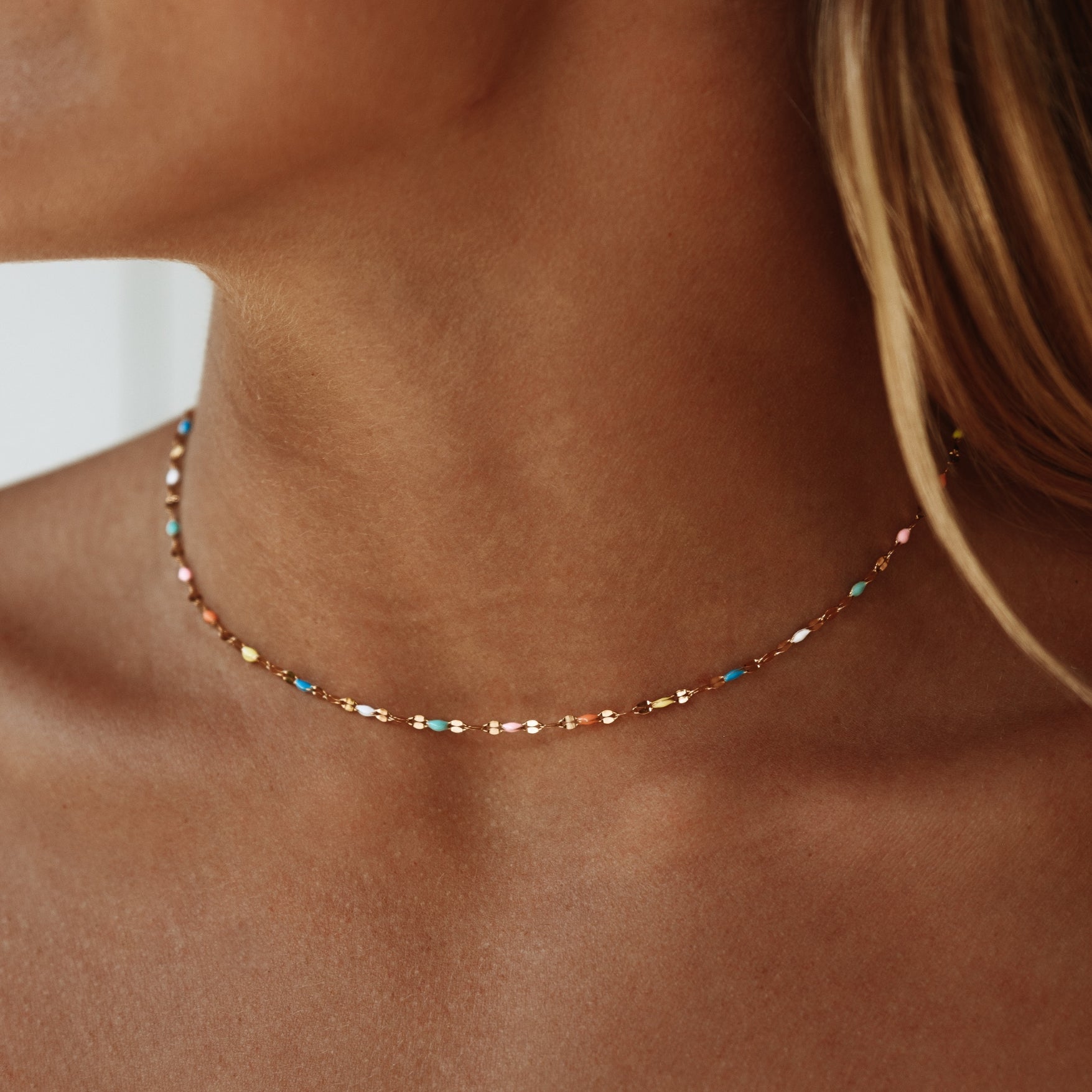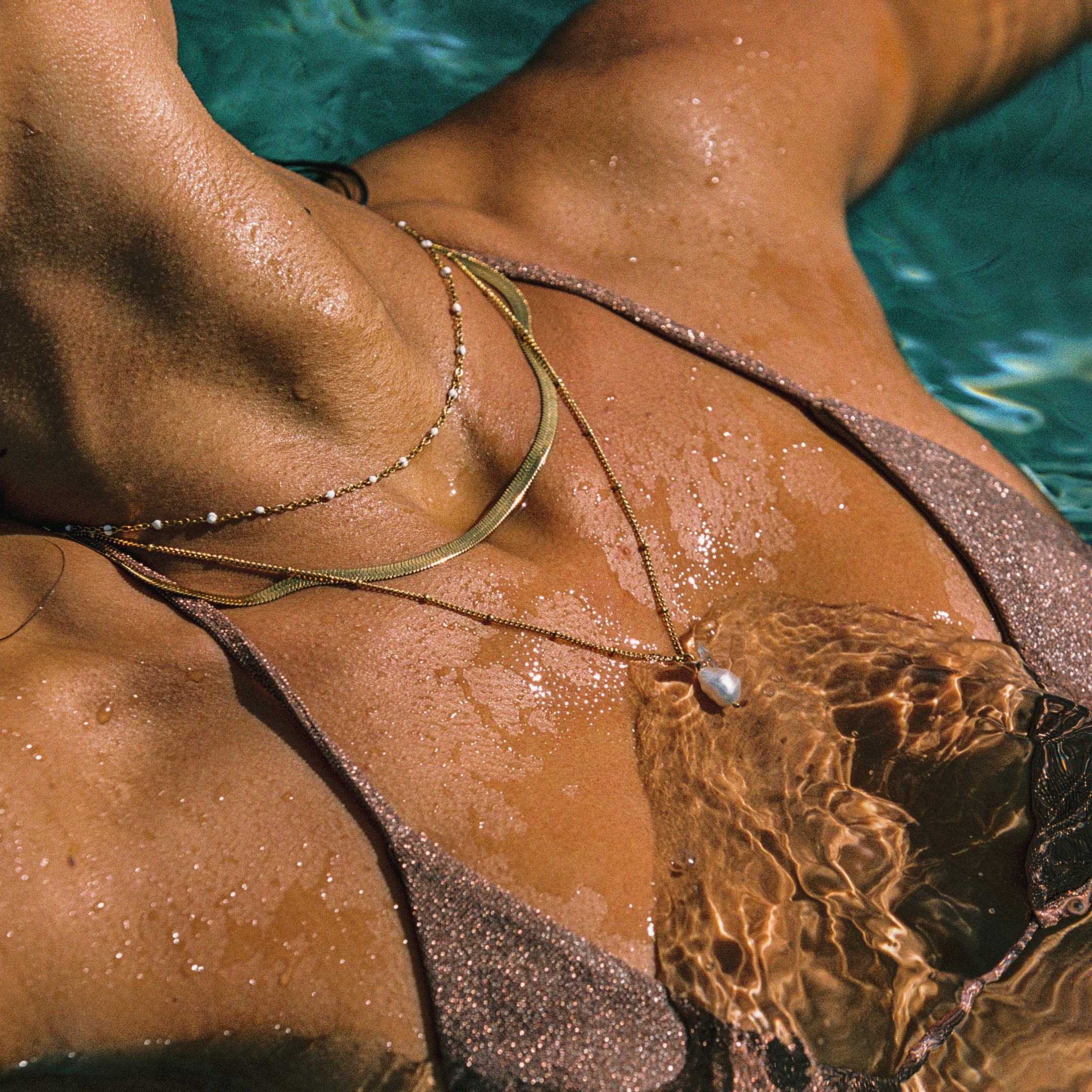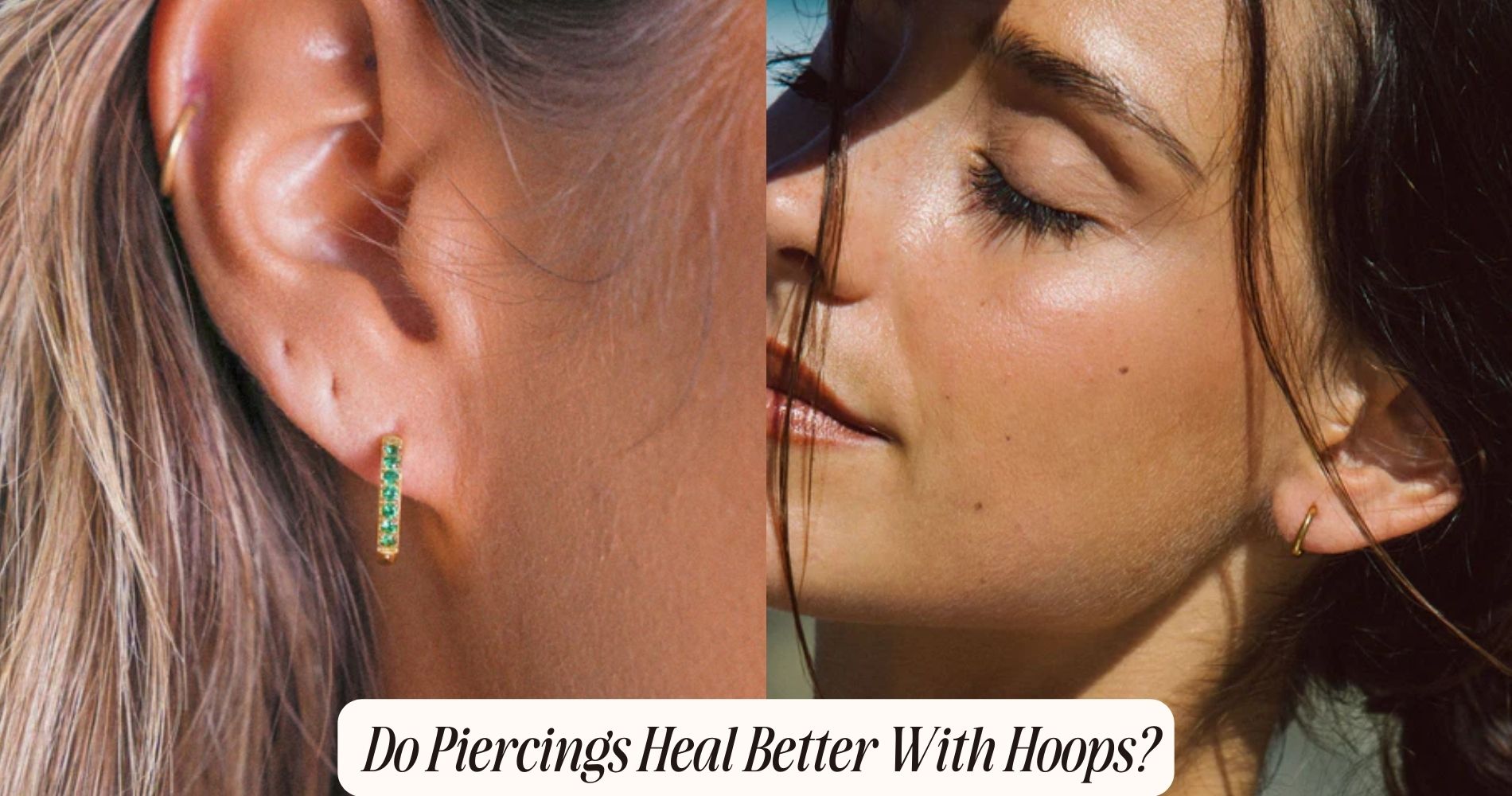
Does 18K Gold PVD Plating Tarnish
What Is 18K Gold PVD Plating?
18K Gold PVD plating is a process where a thin layer of 18-karat gold is deposited onto a substrate through physical vapor deposition, guaranteeing a durable and high-quality finish. This technique involves the evaporation of gold in a vacuum chamber, allowing the metal to bond at an atomic level with the base material. The resulting coating not only enhances the durability of the item but also offers an aesthetically pleasing appearance.
When it comes to the chemical composition, 18K gold contains 75% pure gold, with the remaining 25% consisting of other metals like copper and silver. This blend provides a balance of malleability and strength, crucial for jewelry applications. The PVD process locks this composition onto the substrate, creating a surface that's resistant to wear and tarnish.
In jewelry applications, 18K Gold PVD plating is highly valued for its lustrous finish and longevity. Whether you're considering rings, necklaces, or bracelets, this method ensures that the pieces maintain their brilliance over time.
The PVD layer is thin yet robust, making it a preferred choice for high-quality, enduring jewelry.
How PVD Plating Works
To understand how PVD plating achieves such durability and aesthetic appeal, it's important to examine the intricate process that bonds gold to the substrate at an atomic level. PVD, or Physical Vapor Deposition, involves a high-tech deposition process where a solid material, like 18K gold, is vaporized in a vacuum environment. This vaporized material then condenses onto the substrate, such as stainless steel or titanium, forming a thin, yet remarkably durable coating.
The deposition process begins by placing the substrate and the gold source in a vacuum chamber. The chamber is then evacuated to create a low-pressure environment. Next, a high-energy source, typically a sputtering or evaporation system, bombards the gold target, causing its atoms to vaporize. These vaporized atoms travel through the vacuum and deposit onto the substrate, creating a uniform and adherent layer of gold.
This method is especially favored in industrial applications due to its precision and ability to produce coatings that are both visually appealing and resistant to wear.
The result is a coating that not only enhances the appearance but also noticeably improves the longevity and performance of the underlying material.
Comparing PVD to Traditional Gold Plating
When comparing PVD plating to traditional gold plating, it's important to understand the substantial differences in durability, adhesion, and environmental impact that set these two methods apart.
Traditional gold plating, which has a long electroplating history, involves depositing a thin layer of gold onto a substrate using an electric current. While it offers a classic aesthetic appeal, its thinness often results in wear and tarnish over time. Additionally, the adhesion of gold through electroplating can be less reliable, leading to peeling or flaking, especially when exposed to harsh conditions.
On the other hand, PVD (Physical Vapor Deposition) plating, particularly with 18K gold, provides a more durable and robust finish. The PVD process involves vaporizing gold in a vacuum chamber and allowing it to condense onto the material, creating a strong bond at the molecular level. This results in a coating that's not only thicker but also more resistant to wear and tarnish.
Moreover, PVD plating is more environmentally friendly, as it avoids the use of harmful chemicals common in traditional electroplating.
Durability of 18K Gold PVD
Given the superior characteristics of PVD plating, you'll find that the durability of 18K Gold PVD greatly surpasses that of traditional gold plating. The enhanced durability primarily stems from its advanced chemical composition and the increased surface hardness achieved through the PVD process.
Physical Vapor Deposition (PVD) involves vaporizing a pure gold source and depositing it onto the substrate in a controlled environment. This method guarantees a uniform and dense layer that offers excellent resistance to wear and corrosion.
The chemical composition of 18K Gold PVD is meticulously controlled to include stabilizing elements that enhance its durability. This engineered composition not only maintains the luxurious appearance of 18K gold but also significantly enhances its longevity compared to traditional plating methods.
Additionally, the PVD process imparts a remarkable surface hardness to the gold layer, often measured in terms of Vickers hardness. This increased surface hardness translates to better resistance against scratches, impacts, and everyday wear and tear.
Factors Affecting Tarnish
Several factors greatly influence the tarnishing of 18K Gold PVD plating. Environmental conditions, exposure to chemicals, and physical abrasion all play a significant role.
Environmental factors like humidity and air pollution can accelerate tarnishing. High humidity levels promote corrosion, while pollutants like sulfur compounds in the air can react with the gold layer, causing discoloration over time.
Chemical exposure is another key consideration. Common household substances such as chlorine, found in swimming pools, and cleaning agents can degrade the PVD coating. Even everyday cosmetic products like perfumes and lotions contain chemicals that can compromise the integrity of the plating. Prolonged exposure to these chemicals can lead to the breakdown of the protective layer, making the underlying materials more susceptible to tarnish.
Physical abrasion is also critical. Regular wear and tear, such as friction from clothing or other jewelry pieces, can cause microscopic scratches on the gold surface. These scratches can expose the underlying metal, making it more vulnerable to environmental factors and chemical exposure.
Understanding these contributing elements is essential to maintaining the luster and longevity of your 18K Gold PVD plated items. By being aware of these factors, you can better protect your jewelry from tarnishing.
Maintenance Tips
To maintain the brilliance and longevity of your 18K Gold PVD plated jewelry, regularly clean it with a soft cloth and mild, non-abrasive soap. This simple step helps remove oils, dirt, and other contaminants that may dull the finish. Always rinse thoroughly with lukewarm water and pat dry with a clean, lint-free cloth.
For best maintenance, utilize specialized cleaning products designed specifically for gold-plated items. Avoid harsh chemicals and abrasive materials that can damage the plating. Ultrasonic jewelry cleaners should also be avoided as they can cause micro-scratches and affect the overall appearance.
Proper storage solutions are essential for preserving the integrity of your 18K Gold PVD plated jewelry. Store each piece individually in a soft pouch or a lined jewelry box to prevent scratches and minimize exposure to air and moisture, both of which can accelerate tarnishing. Consider using anti-tarnish strips within your storage containers to absorb any residual moisture.
Additionally, remove your jewelry before engaging in activities that expose it to chemicals, such as swimming or using household cleaning products. This will further safeguard the plating and ensure it retains its luster for years to come.
Real-World Examples
Many jewelry enthusiasts have shared their experiences with 18K Gold PVD plated pieces, noting how proper maintenance practices have kept their items looking pristine even after years of use. From rings to bracelets, users have reported that PVD plating, when well-cared for, can withstand the test of time, aligning perfectly with modern fashion trends.
Customer reviews often highlight the durability and lasting shine of their 18K Gold PVD plated jewelry. For instance, one customer wore an 18K Gold PVD plated watch daily for three years, claiming it maintained its luster without any signs of tarnish. Another review praised a PVD plated necklace, mentioning that even with frequent exposure to water and sweat, the piece showed no degradation.
In fashion circles, 18K Gold PVD plated jewelry has gained traction as a reliable and stylish choice. Fashion influencers and stylists often recommend these pieces to followers, emphasizing their longevity and resistance to tarnish.
Pros and Cons
When considering 18K Gold PVD plating, you should evaluate its durability and longevity, as this plating method offers robust resistance to wear and corrosion. Maintenance and cleaning are minimal, but it's important to follow specific guidelines to preserve its appearance.
Additionally, you'll find that the cost and value of PVD plating are compelling, balancing luxury aesthetics with affordability.
Durability and Longevity
In evaluating the durability and longevity of 18K gold PVD plating, you'll find that its resilience against tarnish and wear is greatly enhanced compared to traditional gold plating methods. One critical factor is the coating thickness achieved through PVD (Physical Vapor Deposition). Unlike conventional plating, PVD creates a denser, more uniform layer, typically ranging from 0.5 to 3 microns. This thicker coating notably boosts resistance to scratches, corrosion, and daily wear.
Proper surface preparation is another key element. Before applying the PVD coating, the substrate undergoes meticulous cleaning and smoothing to ensure excellent adhesion. This step eliminates any contaminants or irregularities that could compromise the coating's integrity. As a result, the gold layer bonds exceptionally well to the base material, further enhancing durability.
On the downside, while PVD plating is highly durable, it's not entirely immune to damage. Over time, and under extreme conditions, the coating can still wear down, especially in high-friction areas. Additionally, the initial cost of PVD plating can be higher than traditional methods, but the extended lifespan often justifies the investment.
Maintenance and Cleaning
Maintaining the luster of 18K gold PVD plating involves regular, meticulous cleaning to prevent the build-up of oils and dirt, which can dull its appearance over time. To guarantee your plated items remain pristine, you should establish a consistent cleaning frequency. Ideally, clean your pieces once every two weeks if they're worn frequently. This prevents contaminants from accumulating and preserves the plating's brilliance.
When cleaning, use safe solvents such as mild soap diluted in warm water. Avoid harsh chemicals like bleach or ammonia, as they can damage the plating. Gently scrub the item with a soft cloth or a non-abrasive sponge to remove grime. Rinse thoroughly with lukewarm water and pat dry with a lint-free cloth to avoid water spots.
Pros of this maintenance routine include retaining the original shine and prolonging the life of the plating. However, the cons are the time and care required to maintain this regimen. If neglected, the accumulated dirt and oils can lead to a dull, lackluster finish, requiring more intensive cleaning methods to restore the original gleam.
Regular, gentle maintenance is key to preserving the beauty of your 18K gold PVD plated items.
Conclusion
To sum up, 18K gold PVD plating offers superior durability and resistance to tarnish compared to traditional gold plating.
By understanding the factors affecting tarnish and following proper maintenance tips, you can guarantee your jewelry remains vibrant and lustrous.
With its robust wear resistance and longer lifespan, 18K gold PVD plating is an excellent choice for those seeking both beauty and longevity in their accessories.
Make an informed decision and enjoy the lasting brilliance of PVD-plated jewelry.























Leave a comment
This site is protected by hCaptcha and the hCaptcha Privacy Policy and Terms of Service apply.